
Capture Workflow
Start Task: Capture Process Workflow
The start task in this type of process has different properties compared to the previous ones. These properties include: name, description, confidence level, source, email inbox, email attachments, email body, email filter, timestamp, path, data file, and details file. Some of these properties are described below:
- Confidence Level: When capturing the fields of a record from a file, the capture confidence level is obtained. This is essentially the expected capture accuracy percentage, ranging from 0 to 100.
Example: If the value obtained is lower than the defined threshold, the record will be created but will move to the validation task, awaiting human action. Otherwise, it will not be created and will continue through the process flow.
- Source: Determines the capture type. Each type defines a predefined capture format to follow. The capture types are:
Files to Sign:
In the folder defined in the 'path' property, it will search for all files and retrieve the fields through the separators defined in the field separator, for example, "_", and load them in the order specified in the record type.
Example: If there is a file named "Factura_A_001200506449.tif", the capture process will obtain three fields separated by "_", which, in the order of appearance, are: "Factura," "A," and "001200506449." These fields will then be sent to the path defined in the start task.
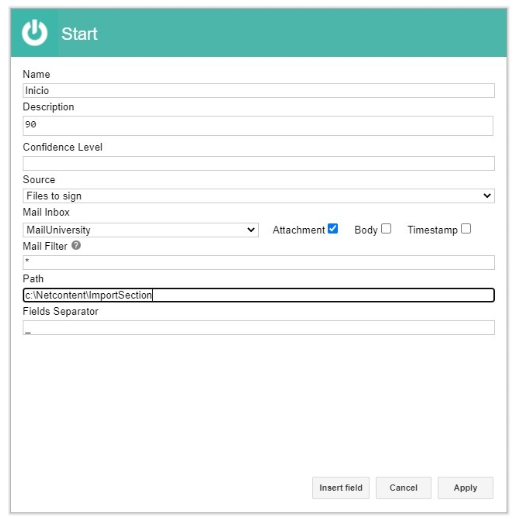
ABBYY File
This option is similar to the file option, but the difference is that it uploads multiple files by reading them from a file that lists them (e.g., datos.csv or datos.xlsx), allowing the fields of the record to be obtained in the format provided by an ABBYY export.
The process with this type of capture should point to the folder where the data file is located, and in that same location, it should contain the capture images along with a folder for the details, which must have the same name as the data file.
Example: The source folder, also called the 'host folder,' will contain the data folders (it might not have details, in which case no file needs to be specified for that purpose).
The columns ROW_INDEX and PAGE_IMAGES must be kept fixed. The columns of the captured data may vary depending on the capture.
The details inside the "Datos" folder are as follows:
"Bercomant ROW_INDEX" must match the ROW_INDEX in the Datos.csv file.
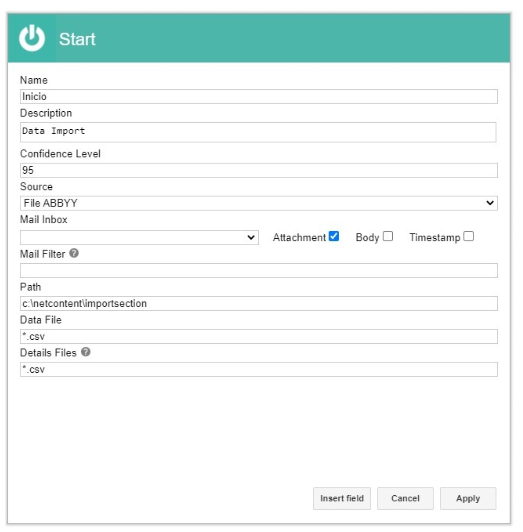
ABBYY FlexiCapture Engine
Obtains the fields of the record processed with ABBYY's FlexiCapture Engine OCR, using custom templates for each record type.
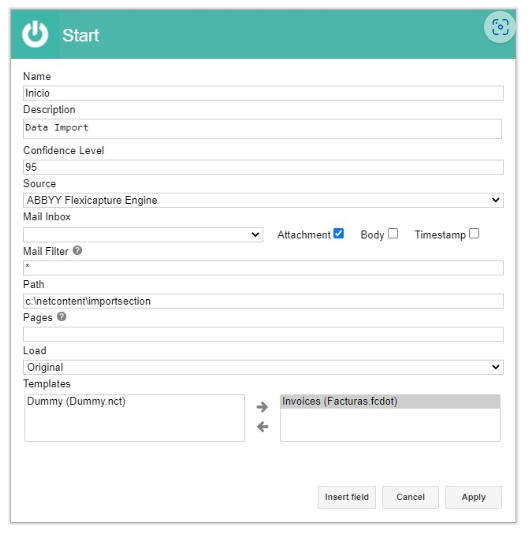
Conditional Task
The conditional task evaluates a condition and, based on the result, takes one path or another. The properties of this task are: Name, Description, Field, Condition, and Value.
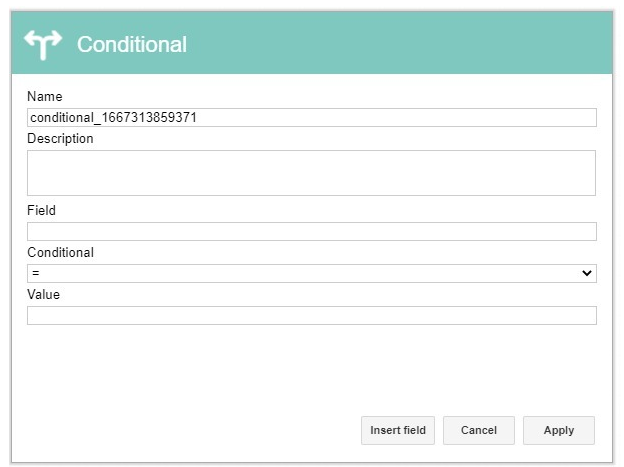
Field: Lists the possible existing fields of the process {cp_<field_name>} and the index fields of the record {ci_<field_name>}.
Condition: A list is presented with the following options: '=', '<', '>', '<=', '>=', '!='.
Value: The value can be entered by the user; it can be a process field or an index field of the record. If a process field or index field is entered, the correct nomenclature must be followed.
One of the particularities of this task is that you must specify which condition each outgoing flow responds to, as there will be two possible outcomes: one for true and another for false. To cover more conditions, the user can create multiple nested tasks.
Field Setting Task
This task allows for the creation or initialization of process fields.
In this task, the user can create process variables and assign them initial values. Alternatively, database or C# scripts can be executed to handle a more complex task. The properties for this task include:
Field Setting Task
This task allows for the creation or initialization of process fields.
In this task, the user can create process variables and assign them initial values. Alternatively, database or C# scripts can be executed to handle a more complex task. The properties for this task include:
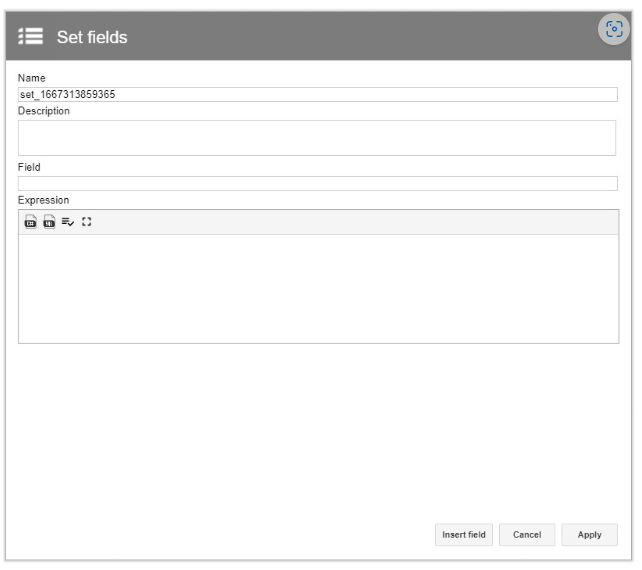
Field: You can type the desired field name, and the list will autocomplete with the existing process fields. If the field you want to use is found, you can select it; otherwise, a new field will be created.
Expression: You can assign a fixed value, the value of another process field, an existing index field, or a scripting operation to the selected field.
To do this, you must follow the established nomenclature by indicating the field within braces. If it is a process field, it will be {cp_<field_name>}, and for an index field, {ci_<field_name>}.
For a mathematical operation, the possible operators can be any recognized by C# or ANSI SQL.
An example would be performing mathematical operations such as ({ci_<field_name>} + 2) / 2, or taking the current date using "Now".
You can also perform complex operations, such as calculating the number of days that have passed since a given date:

For example using this index:

You can also add an ANSI SQL expression, such as taking a string that corresponds to a period, converting it to the YYYYMM format, taking the current date, and converting it to the same format to compare them. It will then return a 1 if the current period is greater than that of the record. Since it is SQL, it must start with BEGIN and end with END.
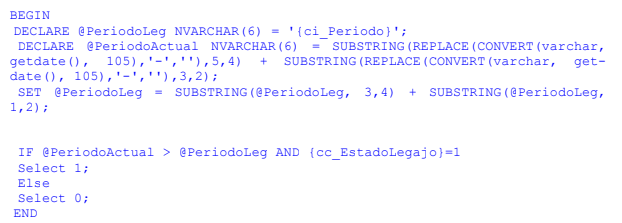
Waiting Task
This task allows you to delay the process for a specified period of time.
The properties for this task are: name, description, and time.
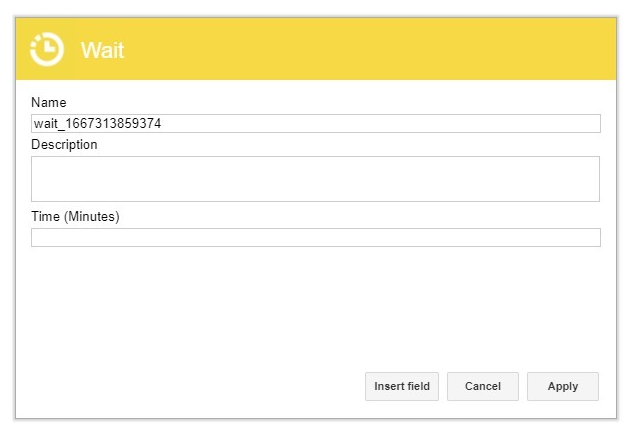
Time: The amount of time to wait, in minutes. For example, if the wait time needs to be one day, you would enter 1440.
Database Search Task
This task allows you to search for values in a SQL Server, Oracle, or MySQL database and pass the result to process fields. It will only take the first row of the query results, so it is most commonly used when aggregation functions (COUNT, SUM, MAX, MIN, etc.) are applied.
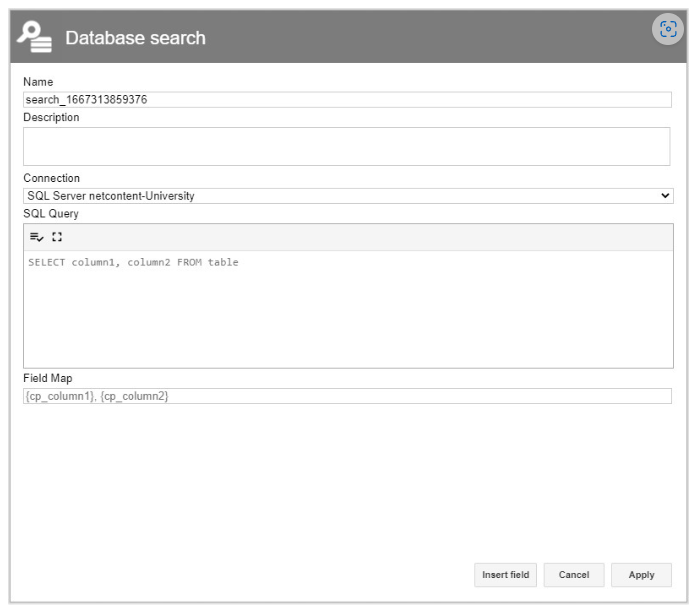
The properties for this task are: name, description, connection, SQL query, and field mapping.
- Connection String: The OLDB representation of the connection. The connections used here are those preloaded in the Netcontent database, specifically in the NC_Connections table.
- SQL Query: An SQL query that will return results in multiple columns.
- Field Mapping: Each field from the query will be mapped to the defined process field in the order they appear.
Email Task
This task allows you to send an email.
The properties for this task are: name, description, recipients, subject, and message.
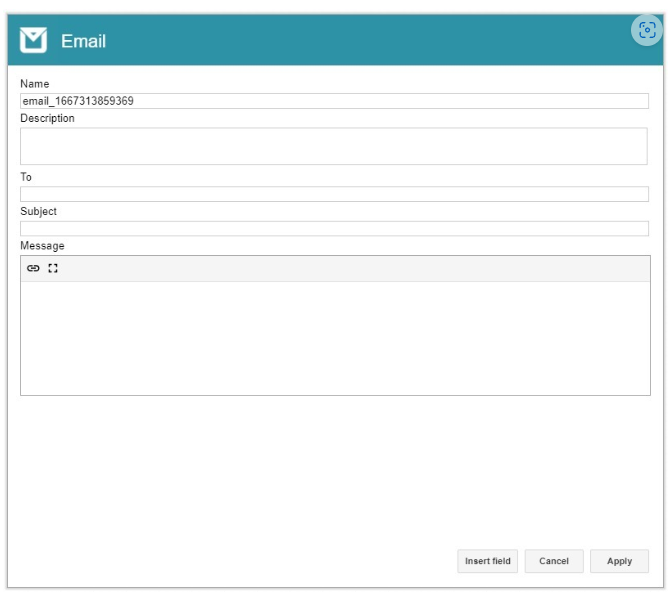
Recipients: Specify one or more recipients, separated by ','.
Subject: Enter a brief text.
Message: Enter the message.
Delete Task
This task allows you to delete a file in the process.
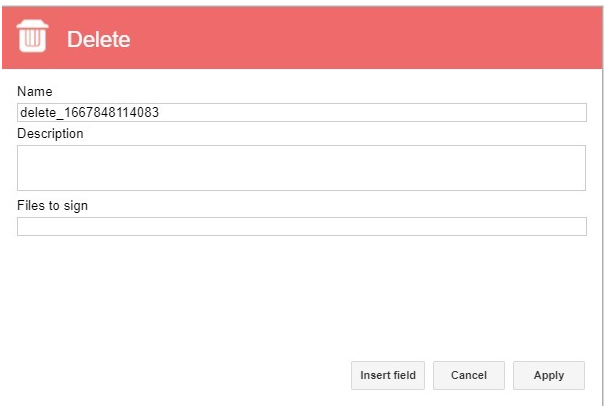
The properties for this task are: name, description, and file.
- File: Name of the file to be deleted.
Database Field Update Task
This task allows you to update a field in the database.
The properties for this task are: name, description, field, and value.
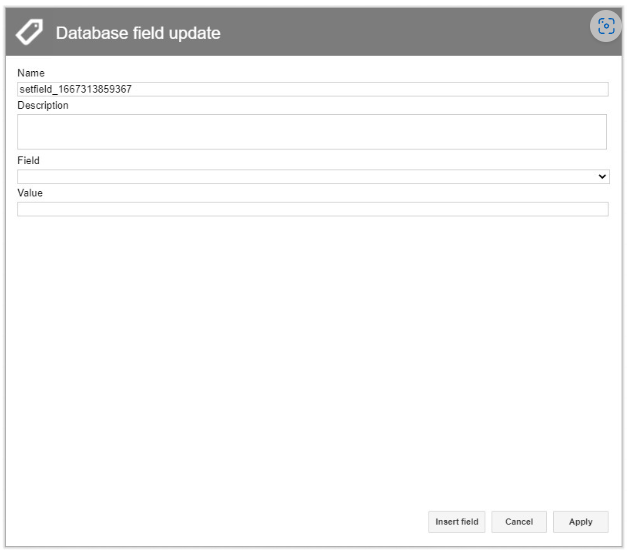
- Field: Select the field to update from a list of index fields of the record and process fields.
- Value: The value can be entered by the user or can be a process field or an index field. If entering a process or index field, the correct nomenclature must be followed.
Export Record Task
This task allows you to export a record to a physical location or a database using the preloaded connections.
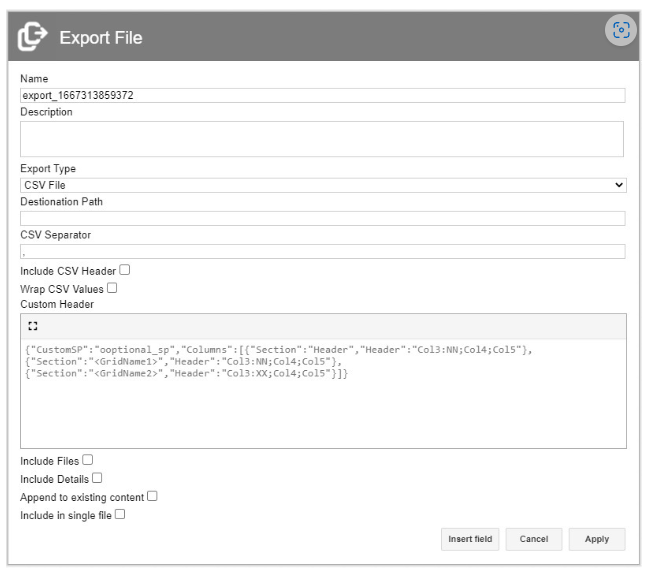
The properties for this task are: name, description, export type (CSV file, JSON file, and existing connections), export path, include details, attach to existing content, and others depending on the selected export type.
Classify File Task
This task allows you to determine the record type of an incoming file in order to create the record and upload it accordingly..
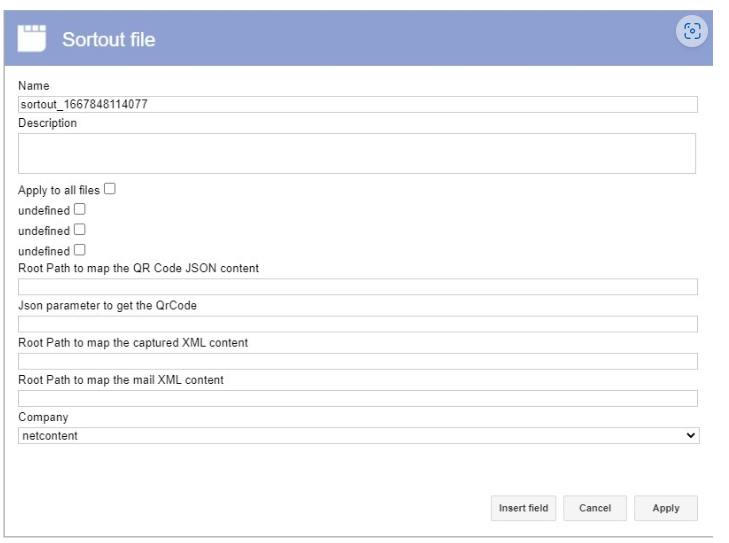
The properties for this task are: name, description, apply to all record types, and company.
Validate File Task
This task indicates that a file needs to undergo manual validation because it could not be classified or its values could not be captured. This may happen due to the confidence level or the presence of suspicious or erroneous fields.
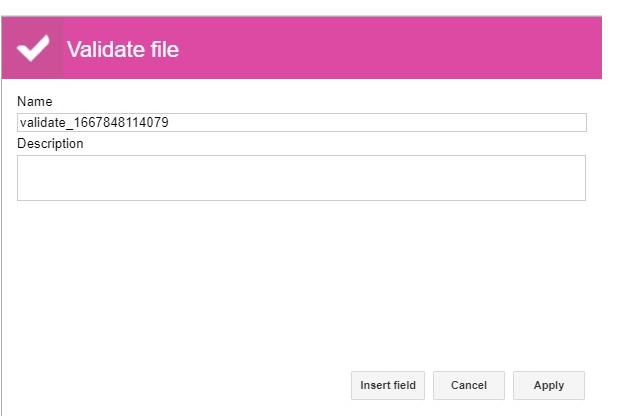
The properties for this task are: name and description.
Consume SOAP Service Task
This task allows you to consume information from a SOAP service.
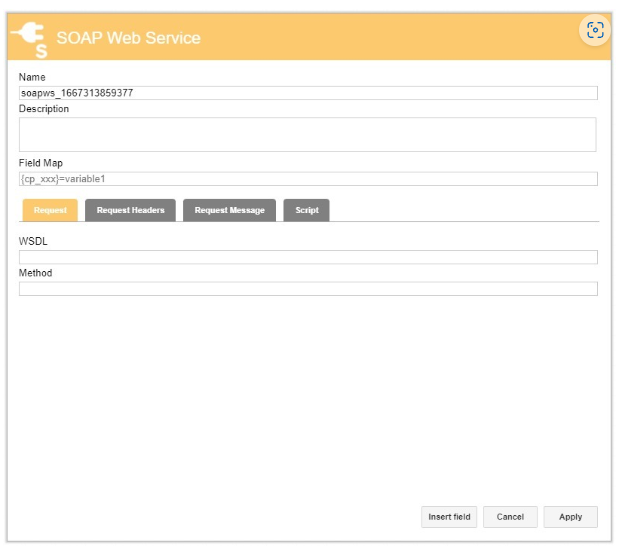
The properties for this task are: name, description, data mapping, request (WSDL and method), request headers (field and value), request message, and script.
Descriptions of some of these properties:
- Field Mapping: The result of the service execution will be stored in a process field. Here, you need to define the name of the process field and the internal variable used for the service execution.
- WSDL: The endpoint of the service to be consumed.
- Request Header: You can define the service headers.
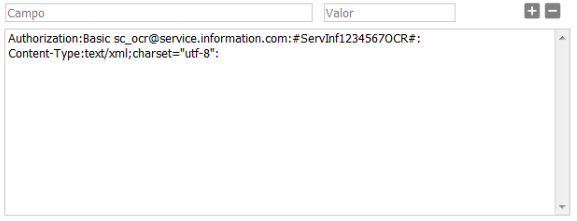
Request Message: The XML containing the parameters to be sent.
Script: The result of the execution can be used as-is, or a parsing script can be defined. You can add logic here to process the result using C# or SQL scripting.
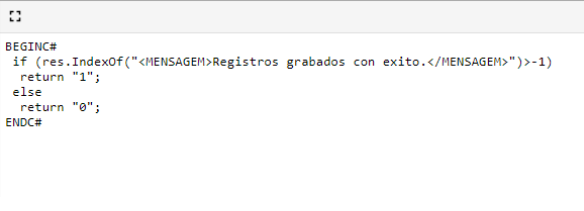
Consume REST Service Task
This task allows you to consume information from a REST service.
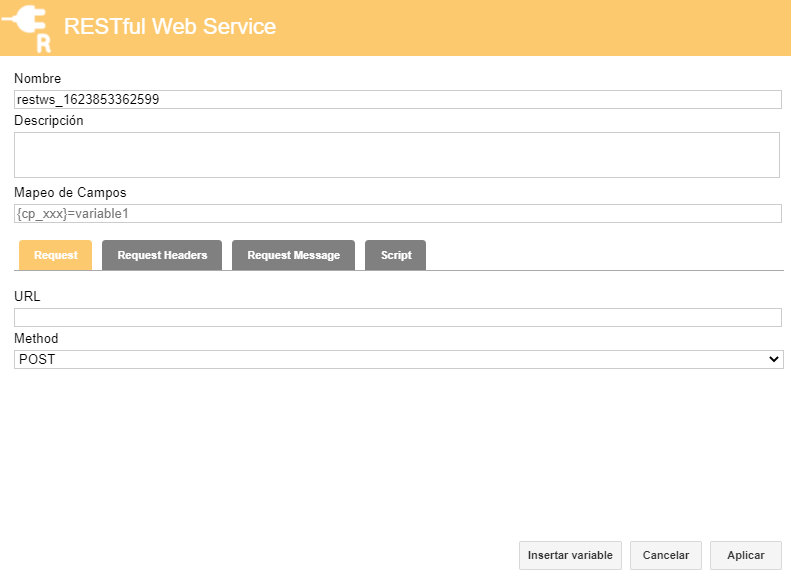
The properties for this task are: name, description, data mapping, request (URL and method: POST, PUT, GET, PATCH, DELETE, COPY, HEAD, OPTIONS, LINK, UNLINK, and PURGE), request headers (field and value), request message, and script.
Descriptions of some of these properties:
- Field Mapping: The result of the service execution will be stored in a process field. Here, you must define the name of the process field and the internal variable used for the service execution.
- URL: The HTTP/HTTPS address of the service to be consumed.
- Method: GET, POST, PUT, etc. If it is GET, the parameters can be defined directly in the URL. In the case of POST or PUT, the Request Message can be used to define the JSON to be sent.
- Request Header: You can define the headers for the service.
- Script: The result of the execution can be used as-is, or a parsing script can be defined. You can add logic here to process the result using C# or SQL scripting.
End Task
Each process can have only one end task. It indicates the completion of the process.
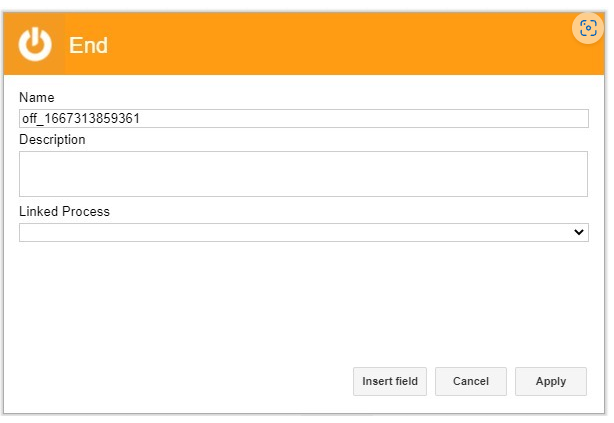
The properties for this task are: name, description, and linked process.
- Linked Process: The completion of one process can trigger the start of another. This will create a record of the selected process's record type.
FTP Service Task
This task allows you to exchange data with another server. The properties for this task are: name, description, path, and the option to delete the file after sending.
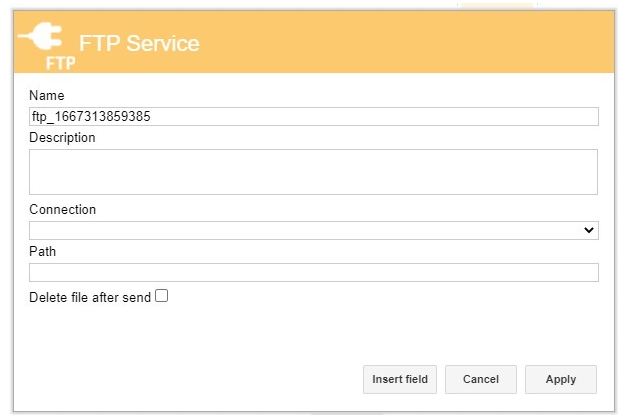
The properties for this task are: name, description, path, and the option to delete the file after sending.
Digital Signature Task
This task allows you to perform a digital signature, either via an external signature service or internally.
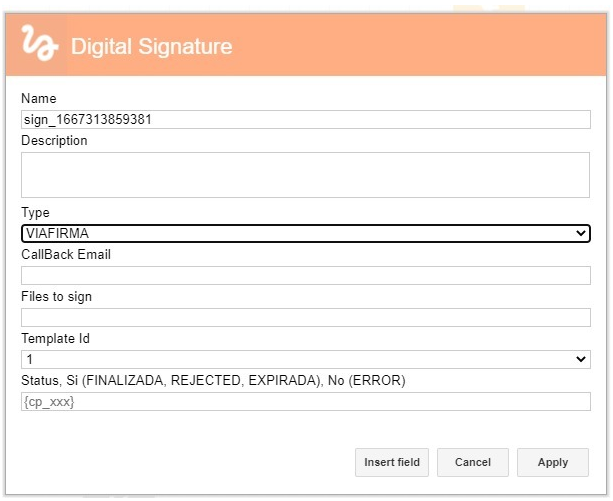
The properties for this task are: name, description, type (via external signature or internal), status, control email, files to sign, template ID, and status. Some properties may change depending on the type of signature selected.
Created with the Personal Edition of HelpNDoc: Ensure High-Quality Documentation with HelpNDoc's Hyperlink and Library Item Reports